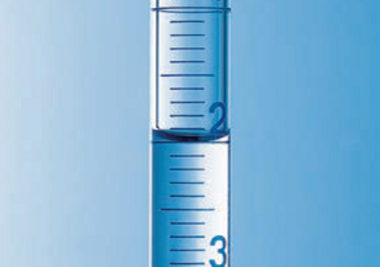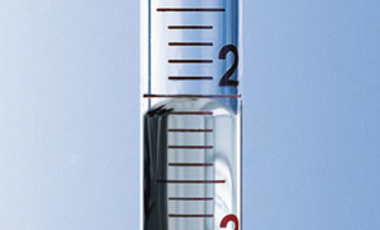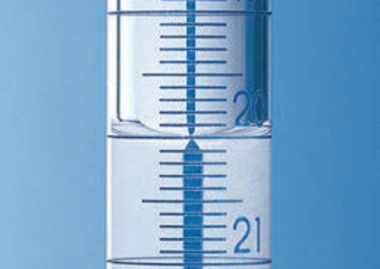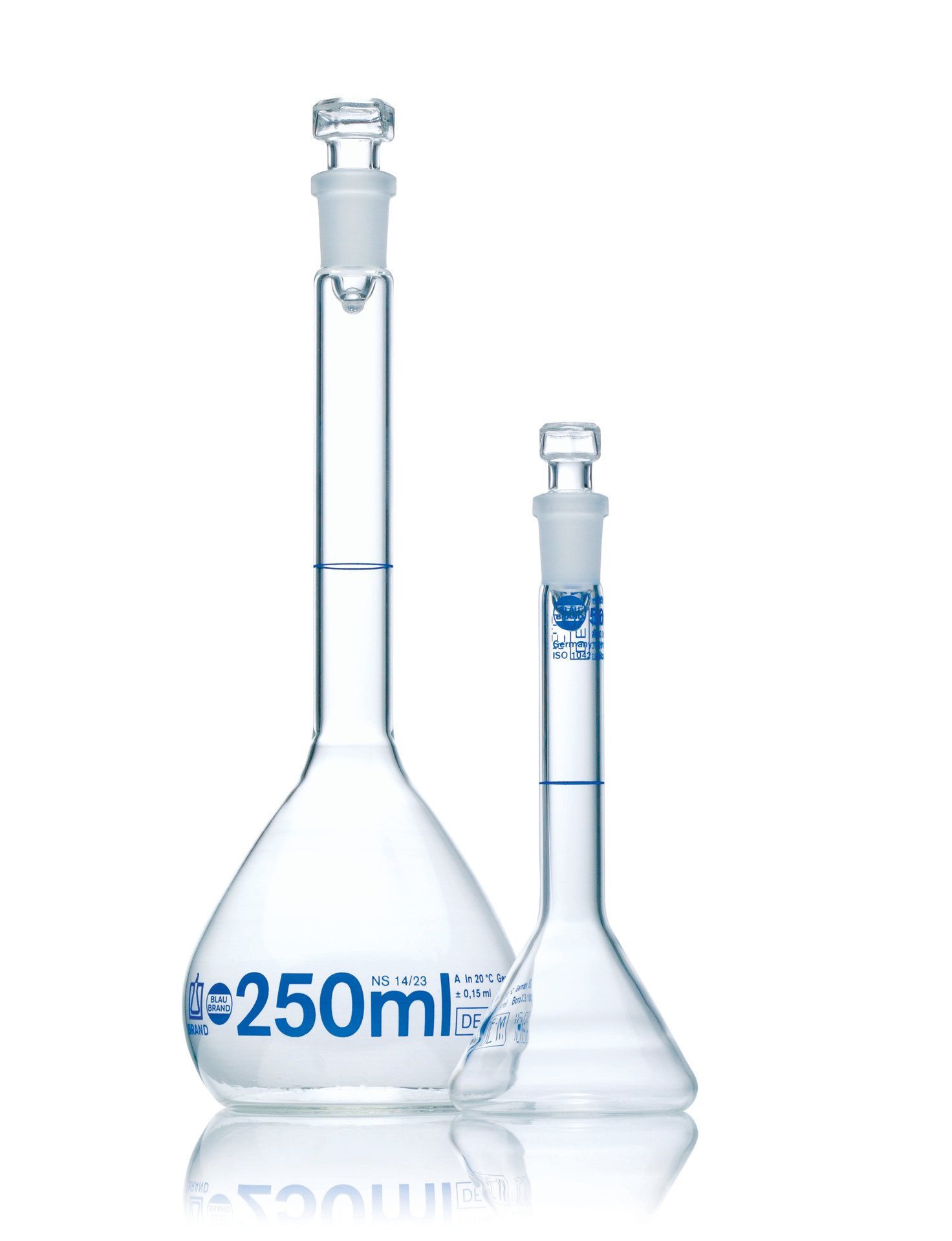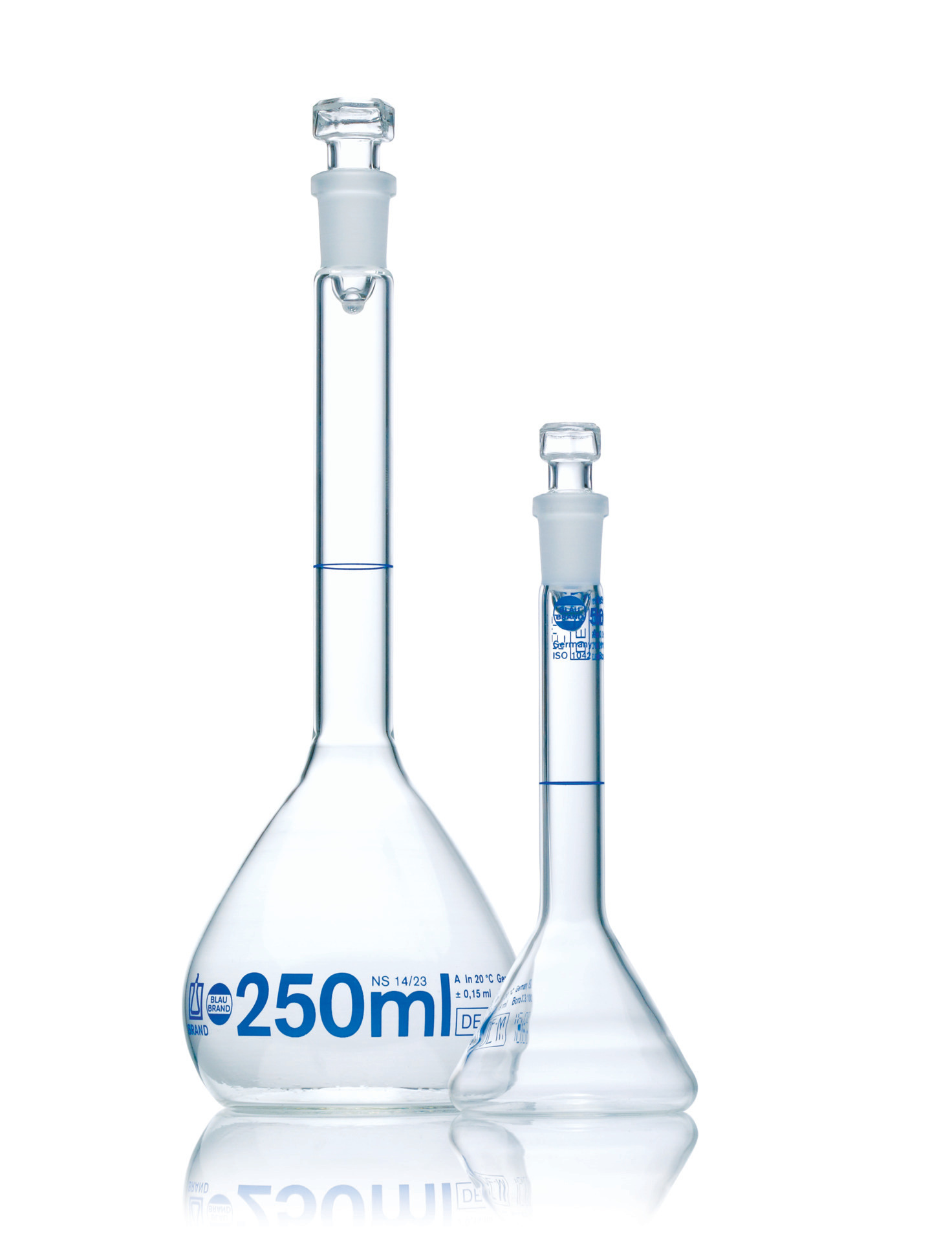Working with volumetric instruments
The liquid meniscus
The term meniscus describes a curvature in the surface of the liquid. The meniscus may be curving upwards or downwards. The curvature develops as a function of the interplay between the adhesion and cohesion forces. If the liquid molecules are attracted more strongly by the glass wall (adhesion) than by their own kind (cohesion), the meniscus is curved downwards, or concave; the edge of the liquid surface is slightly raised. This is the case, e.g., with aqueous solutions. If the diameter of a pipette is narrow enough – as with capillary pipettes – the adhesion force is strong enough to pull up not only the edge but also the entire liquid level (capillary effect). If the cohesion force of a fluid is stronger than the adhesion force of the glass wall, an upwardly curved (convex) meniscus is formed. This happens with mercury, for example.
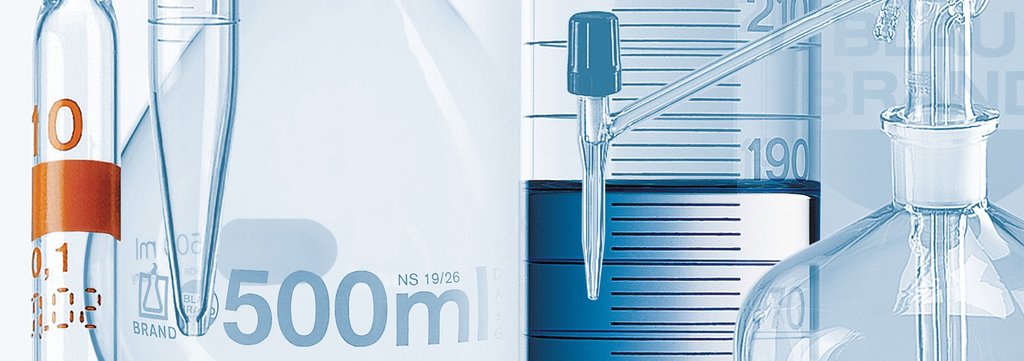
Meniscus setting
Correct meniscus setting is a prerequisite for accurate volumetric measurement.
Important note: The temperature of the liquid and the environment during use are important. While the expansion of a glass volumetric instrument is negligible, the expansion of the liquid at different temperatures must be taken into account. To minimize volume errors as much as possible, the volumes of all the liquids in contact with one another should be measured at a common (prevailing daily) temperature. Especially in the preparation of standard solutions, for example, the pipetting of the samples and the titration should be done at the same temperature to the extent possible. Significant temperature differences between the measuring instrument and the liquid should likewise be avoided.
Reading the meniscus
For parallax-free adjustment of the meniscus, the volumetric instrument is held upright and the observer’s eye must be at the same height as the meniscus. In this position the ring mark will appear as a line. The meniscus will appear darker and more easily readable in front of a light background if a piece of dark paper is held behind the instrument immediately beneath the ring mark or graduation mark.
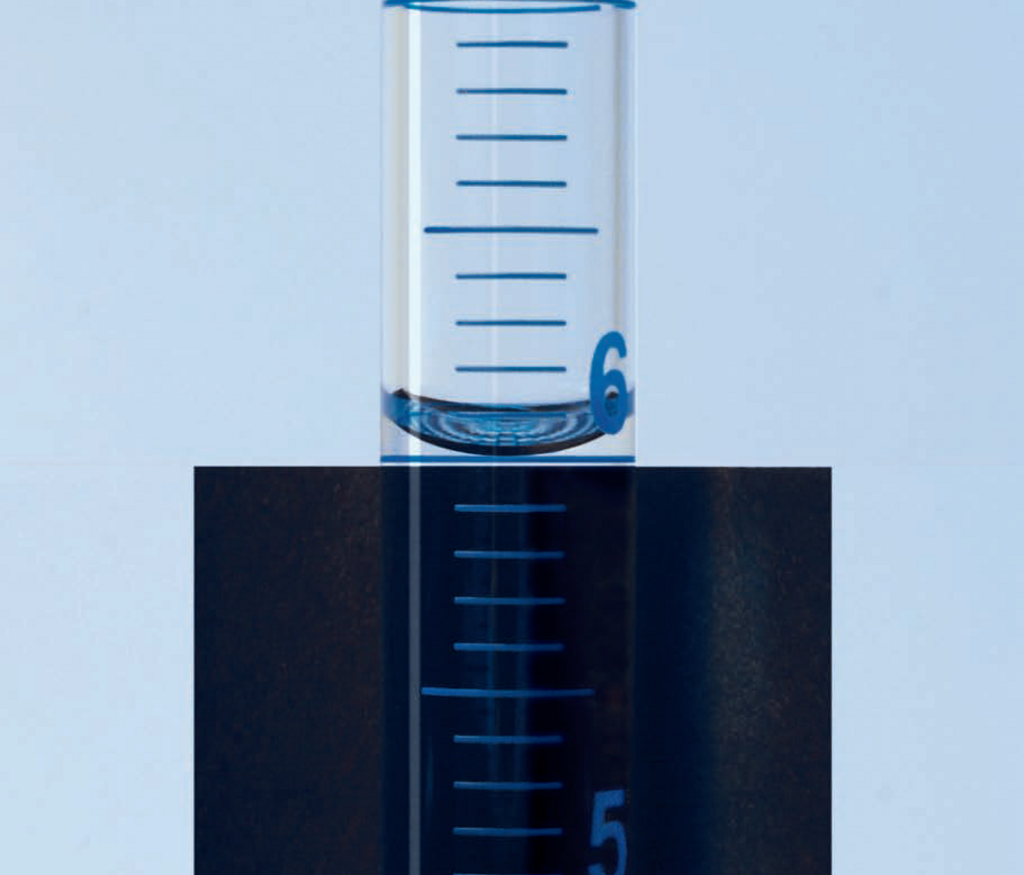
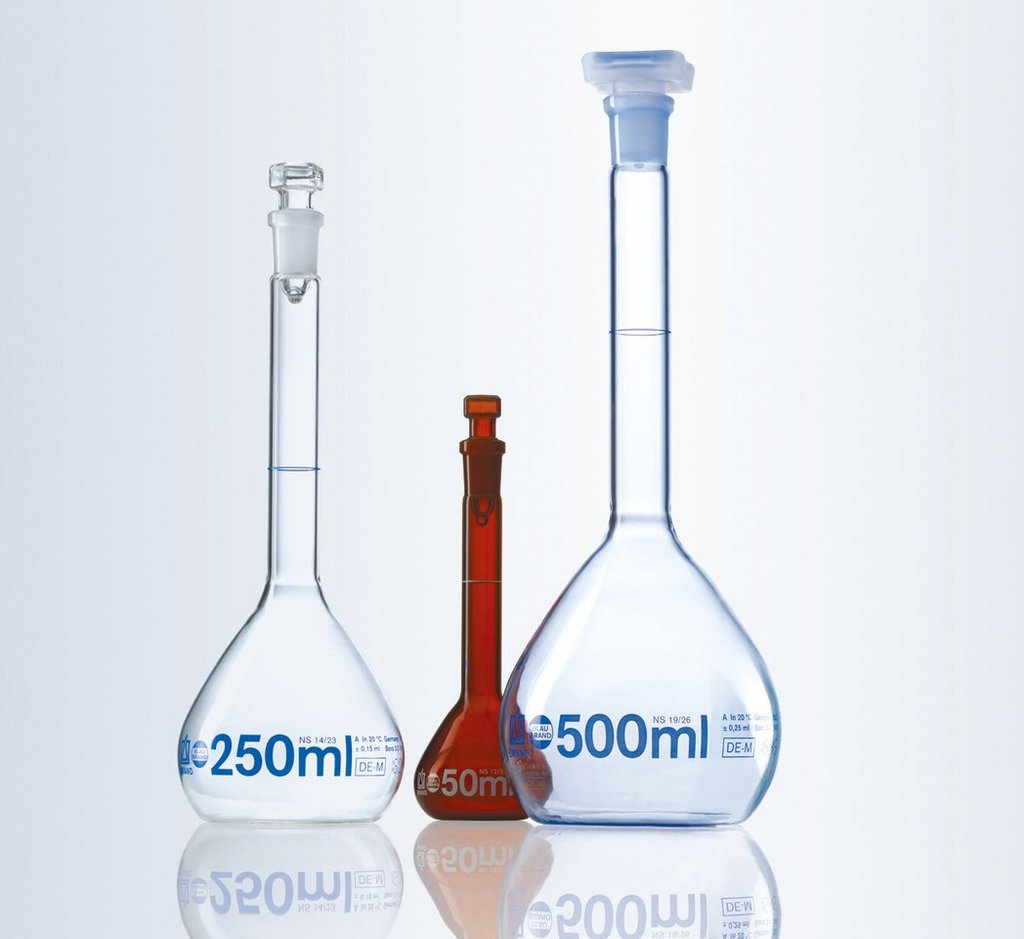
Handling of volumetric flasks
Volumetric flasks, class A and B, are calibrated to contain (TC, In), and are mainly used for the preparation of highly accurate dilutions and standard solutions.
Modern analytical methods require small-capacity volumetric flasks. Small-sized conventional volumetric flasks (up to approx. 50 ml) tend to tip over easily due to their high center of gravity and their small base area. Trapezoidal volumetric flasks are much more stable. Their center of gravity is lower, and their base area is more than twice as large compared to the equivalent standard flasks.
